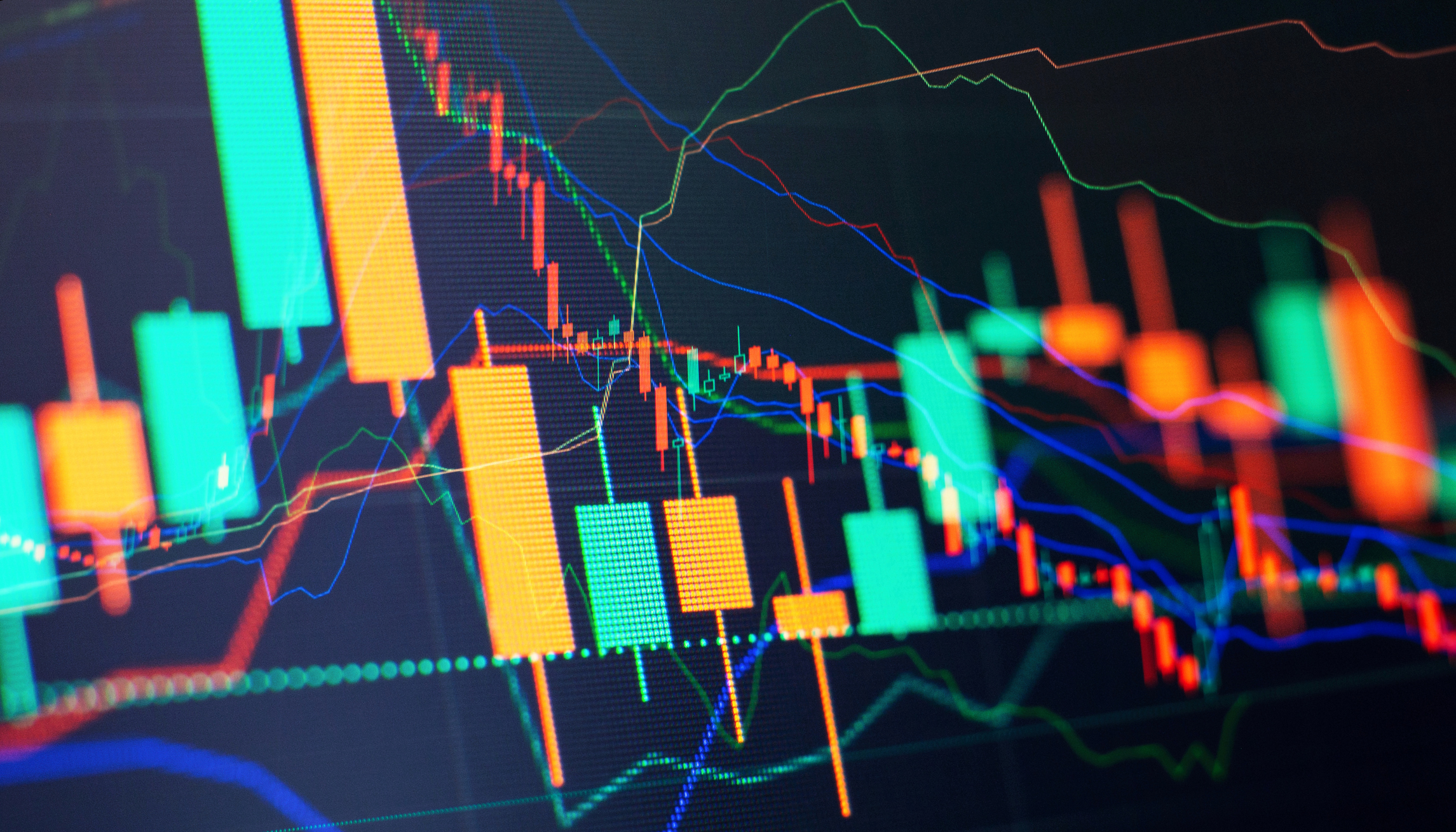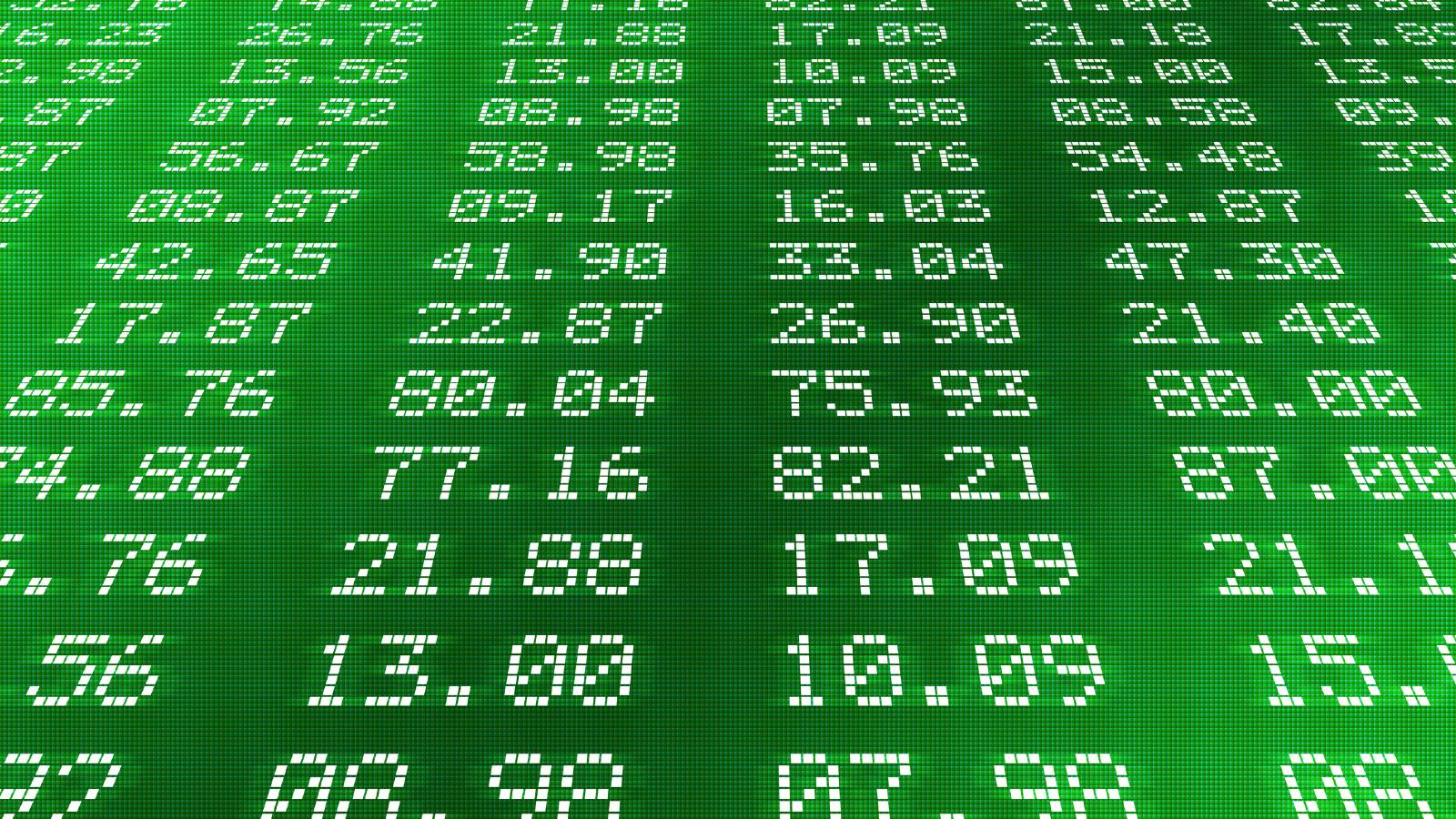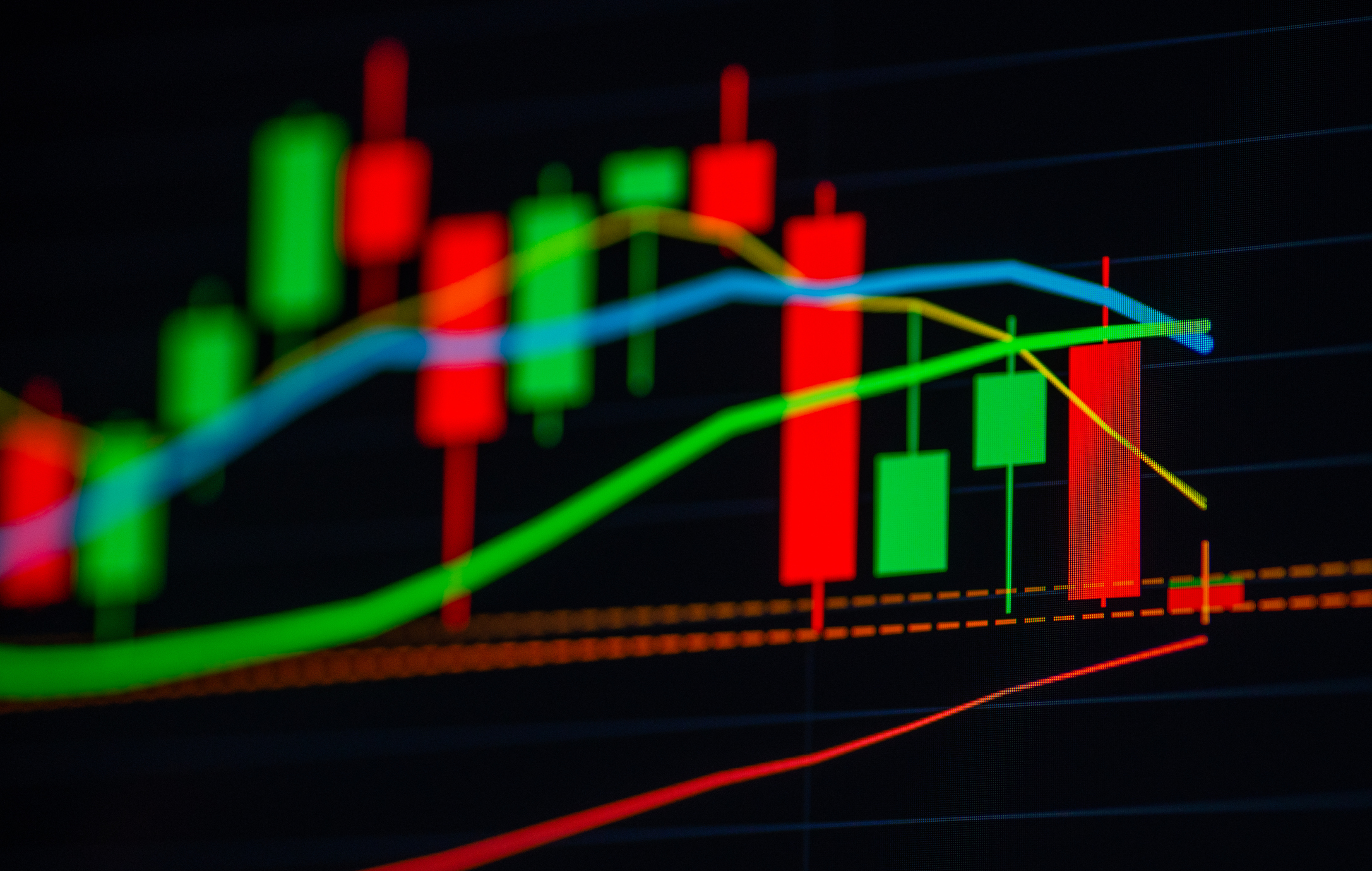What Now for the Dow: 30 Stocks to Buy, Sell, or Hold
Ten to buy, 18 to hold, two to sell among the Dow Industrials.

For all its quirks, the Dow Jones industrial average remains one of the most influential market gauges in the world. The Dow still makes headlines when it hits new highs, and additions to and deletions from the blue-chip index are watched with interest for what they show about the shifting composition of the U.S. economy. At its inception in 1884, the index that would later become the Dow was almost entirely populated by railroads. In the late 1990s, the Dow shifted abruptly toward technology with the additions of Hewlett-Packard, Microsoft and Intel. And when General Motors was removed in 2009, it was the first time in more than 100 years that the Dow contained no carmakers. Below you’ll find our rating (buy, hold or sell) on each of the 30 stocks in the Dow. Only two stocks warrant a sell rating, reflecting our view that the global economy will continue to grow, albeit modestly. And the holds greatly outnumber the buys because share prices have advanced so sharply over the past four years.
The Dow 30: Which Stocks to Buy, Hold or Sell
10 to buy
1. 3M. (symbol MMM) The maker of Scotch tape, sealants for airplanes, orthodontic appliances and much more is a fabulous company that’s feeling the pinch of a slow economy. Company officials recently lowered their forecast for 2013 profits. But 3M’s record of innovation, its diversified product base and its excellent prospects abroad signal a bright future. Even better, 3M has raised its quarterly dividend each year for the past 55 years.
2. Chevron. (symbol CVX) By investing heavily in exploration in recent years, the second-largest U.S. energy company has set itself up for years of solid growth. In 2012, for example, the company replaced the equivalent of every 100 barrels of oil and gas it extracted with the equivalent of 112 barrels of new proven reserves. Chevron is also increasing its exposure to liquid natural gas, with big projects in Australia and Canada in the works. The firm has boosted its dividend at an annual pace of 9% over the past five years.

Sign up for Kiplinger’s Free E-Newsletters
Profit and prosper with the best of expert advice on investing, taxes, retirement, personal finance and more - straight to your e-mail.
Profit and prosper with the best of expert advice - straight to your e-mail.
3. Cisco Systems. (symbol CSCO) Cisco is the dominant player in routers, switches and other networking equipment. The company is seeking to maintain and sharpen its competitive edge in those areas by shedding lagging business lines and making acquisitions. But it is also expanding into faster-growing software and services, all the while maintaining its enviable profit margins.
4. General Electric. (symbol GE)GE has rediscovered its mojo. GE Capital, the finance unit that caused major headaches during the 2008 financial crisis, is smaller and healthier than it was a few years ago. The company’s core industrial businesses have sales backlogs large enough to last for years. And management is increasingly focused on returning cash to shareholders.
5. International Business Machines.(symbol IBM) Big Blue is suffering a temporary slump. The tech giant posted abysmal results in the first quarter, with its hardware and services units showing sluggish sales. But the company is working to sell off its least-profitable units and is in the middle of a vast cost-cutting effort. Once IBM rights the ship, its stock should deliver stellar gains.
6. Microsoft. (symbol MSFT)Investors who focus on how badly Microsoft is lagging Apple and Samsung in the mobile-phone wars are looking at Microsoft all wrong. The company is entrenched in the corporate world, where sales of its operating systems and applications software throw off steady streams of cash. The stock is plenty cheap, and Microsoft has raised its dividend at a 21% annual clip over the past three years.
7. Pfizer. (symbol PFE) The world’s largest drug maker has been smarting ever since losing patent protection on the hit cholesterol drug Lipitor in 2011. But with several potential new blockbuster drugs on their way to market, plenty of cash to keep its massive research-and-development machine ticking, and a stock that’s far from overpriced, these shares look appealing.
8. Travelers. (symbol TRV)The seller of business, home, auto and other insurance tends to err on the side of conservatism when it comes to underwriting policies and investing its spare cash. That’s been a boon in recent years and has helped fuel Travelers’ strong stock-price gains compared with its peers. Although low interest rates pose a challenge, Travelers has been able to cope by raising premiums.
9. United Technologies. (symbol UTX)The maker of elevators, escalators, refrigerators, helicopters, aircraft engines and more is generating large amounts of cash, which it’s using to buy back shares and pay down debt. Although any future cuts to U.S. defense spending could hurt results, strong sales to emerging markets should help keep growth on track.
10. UnitedHealth Group. (symbol UNH) It isn’t easy for new competitors to put together a network of health providers, so UnitedHealth, the nation’s largest health insurer, holds formidable advantages. Health care reform has been a mixed bag for business, bringing in new patients while increasing regulation. But the company’s number-one position and the stock’s attractive valuation tip the scales here.
[page break]
18 to hold
1. American Express (symbol AXP).The credit card giant is a great company in a fine industry. Credit card companies have strong competitive advantages (it’s not easy for newcomers to set up a network). And Amex’s cardholders tend to be affluent, to spend a lot and to pay their bills on time. But with the shares up 32% this year (results are through May 31) and consumer spending sluggish, this isn’t the time to load up.
2. AT&T (symbol T).Competing fiercely with Verizon Wireless, AT&T has seen its results suffer in recent years because of the subsidies it offers to iPhone buyers. Dwindling use of landline phones is another headache. But AT&T throws off plenty of cash to support its hefty dividend, so there’s no reason for investors to sell.
3. Bank of America (symbol BAC).BofA has made big strides in cleaning up its problem loans and settling lawsuits with investors who bought bum mortgages from it. But its stock has soared 86% just in the past year, putting it close to the $14 price target mentioned in our story 4 Big-Bank Stocks Worth a Buy However, with loan and legal woes ongoing, demand for new loans still tepid, and management trying to wrestle a bloated cost structure into submission, investors should sit tight for now.
4. Boeing (symbol BA).Investors breathed a sigh of relief when Boeing announced that regulators had approved its fix for faulty batteries on the company’s new 787 Dreamliner planes, which had been grounded for four months. But the Dreamliners haven’t been the only things taking off; the stock has climbed more than 30% this year, making these shares rich.
5. Caterpillar (symbol CAT). As the world’s largest maker of construction and mining equipment, Caterpillar is a terrific company in an industry that’s closely tied to economic cycles. The firm’s CEO has said the global mining industry is close to a bottom, which would be a positive for Caterpillar. But we think continued economic weakness, plus an inventory backlog among the company’s dealers, merit a patient approach here.
6. Coca-Cola (symbol KO). Although health-conscious Americans and other developed-market consumers are drinking fewer sugary sodas, rising living standards in emerging nations leave consumers there with more money to spend on wants rather than needs. The world’s largest beverage company has boosted its dividend in each of the past 50 years, but the stock is on the pricey side.
7. DuPont (symbol DD).Once predominantly a chemical company, DuPont has become increasingly dependent on its agriculture business, which sells seeds and pesticides, to drive growth in recent years. But DuPont lags rival Monsanto in agriculture, and sales could continue to be sluggish in its core chemicals business for some time. A fine dividend, however, makes DuPont a hold.
8. ExxonMobil (symbol XON). As more of the world’s easy-to-exploit energy resources are exhausted, Exxon’s main challenges are to make new discoveries and bring them online fast enough to replace depleted reserves. Fortunately, Exxon has unrivaled resources for exploration and acquisitions, with plenty of cash left over to buy back shares and fund its dividend.
9. Home Depot (symbol HD). The largest home-improvement retailer, Home Depot has benefited in recent years from an overhaul in how it stocks and prices the merchandise on its shelves. But the shares, which tend to move in sync with the housing market, have already rallied sharply in anticipation of continued improvement in real estate prices.
10. Intel (symbol INTC).The Silicon Valley icon is playing catch-up to rival ARM when it comes to producing semiconductors that power smart phones and tablets. But Intel has a massive research-and-development budget with which to address these woes. Moreover, all those mobile devices must connect to servers to deliver Web sites, videos and other content, and Intel dominates the server-processor market. Its dividend is well supported by profits. Investors should hold on.
11. Johnson & Johnson (symbol JNJ).The maker of drugs, medical devices and consumer products has faced a string of product recalls and lawsuits in recent years. Yet J&J’s future remains bright, thanks to its excellent drug portfolio, deep pockets and diversified product base. However, after surging 39% in the past year, the stock is tough to get excited about.
12. JPMorgan Chase(symbol JPM). Some of the bank’s woes are self-inflicted, such as last year’s embarrassing $6 billion trading loss. But many, such as weak loan demand, low interest rates and too-close-for-comfort regulatory scrutiny, are simply common to banking. JPMorgan is in great shape financially and is the best of the big banks.
13. McDonald’s (symbol MCD).On one hand, first-quarter sales at restaurants open for at least a year declined in all three of McDonald’s geographic segments (the U.S., Europe and the rest of the world). And McDonald’s shares trade for an above-market price-earnings ratio of 17. On the other hand, the world’s largest restaurant chain (by sales) has boosted its dividend in each of the past 37 years.
14. Merck (symbol MRK). The drug giant is having a tough year, as it is still absorbing the impact of the loss of patent protection last year for its asthma drug, Singulair. The company’s pipeline of new drugs isn’t as promising as that of rival Pfizer. But Merck’s shares are worth holding onto for income and for their turnaround potential.
15. Procter & Gamble (symbol PG). The maker of Crest toothpaste, Tide detergent, Gillette razors and other household products lost market share in recent years as strapped consumers shifted to cheaper brands. Sales in emerging nations haven’t been strong enough to pick up the slack. But this steady Eddie has raised its payout in each of the past 57 years.
16. Verizon Communications. (symbol VZ) Verizon Wireless, the nation’s largest provider of mobile-phone service, has been steadily winning market share in recent years (Verizon owns 55% of Verizon Wireless). And its investments in building high-speed, high-capacity fiber-optic lines (called FiOS) to homes and businesses should pay off for years to come. Verizon is a great company, but its shares are pricey.
17. Wal-Mart Stores (symbol WMT). The world’s largest retailer, Wal-Mart is a great company in a highly competitive industry. The firm is cutting prices in the U.S. in a bid to take market share from other discounters, and it plans to open about 500 Neighborhood Market grocery stores over the next four years. But Wal-Mart is struggling to succeed outside the U.S.
18. Walt Disney (symbol DIS).The entertainment giant is on a roll. In the January–March quarter, sales and profits were up in every one of its segments—with more visitors to its theme parks, more viewers for its blockbuster movies, and higher results for its TV channels—compared with the same period in 2012. But with the stock up almost 40% over the past year, buying now would be buying high.
[page break]
2 to sell
1. Alcoa (symbol AA). Shares of the largest U.S. aluminum producer have shed 82% from their all-time high of $47 in 2007, tracking a broader decline in aluminum prices. Although a big jump in economic activity could breathe some life into this stock, we think it’s unlikely the economy will jump as much as needed. Moody’s recently lowered Alcoa’s credit rating to junk status in anticipation of continued weak aluminum prices.
2. Hewlett-Packard (symbol HPQ). Some investors worry that computer and printer maker HP could fall victim to the “death of the personal computer,” as consumers embrace mobile devices. They may be right, as management has yet to demonstrate that it has a strategy for avoiding such a fate. Missteps recently caused a $9 billion loss on a bad acquisition. And after gaining 72% this year, the stock isn’t cheap.
The Dow’s funky math
When the Dow debuted in 1896, Charles Dow, the co-founder of the Wall Street Journal, handpicked the index’s constituents. He didn’t have access to data such as market capitalization (a stock’s price times shares outstanding), which benchmarks such as Standard & Poor’s 500-stock index use to weight holdings. So Dow weighted his by share price, meaning the index would act like a portfolio consisting of one share of each company.
Call it tradition or call it anachronism, but not much has changed since 1896. Stocks are chosen for selection and deletion by a committee made up of staffers at the Wall Street Journal and S&P Dow Jones Indices. And components are still weighted by price. The latter requirement has important implications: Apple, Google and any other stock with an astronomical price are not likely candidates for inclusion anytime soon unless they split their shares.
What might be next to enter or leave the Dow? Richard Moroney, editor of the Dow Theory Forecasts newsletter, believes Alcoa could be booted off. “It’s a tiny part of the Dow because of its low share price,” he says. And aluminum is no longer an important enough part of the economy to truly merit a dedicated spot. Moroney sees Wells Fargo (symbol WFC) and Comcast (CMCSA) as possible substitutes. Although the Dow contains two big banks, financial firms are still underrepresented compared with their influence in the S&P 500. As for Comcast, Moroney says, “TV is what America does.”
Get Kiplinger Today newsletter — free
Profit and prosper with the best of Kiplinger's advice on investing, taxes, retirement, personal finance and much more. Delivered daily. Enter your email in the box and click Sign Me Up.

-
 Stock Market Today: Stocks Soar on China Trade Talk Hopes
Stock Market Today: Stocks Soar on China Trade Talk HopesTreasury Secretary Bessent said current U.S.-China trade relations are unsustainable and signaled hopes for negotiations.
By Karee Venema
-
 2026 Disney Dining Plan Returns: Free Dining for Kids & Resort Benefits
2026 Disney Dining Plan Returns: Free Dining for Kids & Resort BenefitsPlan your 2026 Walt Disney World vacation now. Learn about the returning Disney Dining Plan, how kids aged three to nine eat free, and the exclusive benefits of staying at a Disney Resort hotel.
By Carla Ayers
-
 Stock Market Today: Stocks Soar on China Trade Talk Hopes
Stock Market Today: Stocks Soar on China Trade Talk HopesTreasury Secretary Bessent said current U.S.-China trade relations are unsustainable and signaled hopes for negotiations.
By Karee Venema
-
 Stock Market Today: Mixed Messages Muddle Markets
Stock Market Today: Mixed Messages Muddle MarketsStocks cruised into pre-market action on encouraging news for the AI revolution but stumbled on yet another policy disturbance.
By David Dittman
-
 Stock Market Today: Dow Adds 538 Points on First Trading Day of Second Trump Administration
Stock Market Today: Dow Adds 538 Points on First Trading Day of Second Trump AdministrationStocks rise while the White House issues a historic series of executive orders.
By David Dittman
-
 Why 3M Is the Best Dow Jones Stock Today
Why 3M Is the Best Dow Jones Stock Today3M stock is soaring Tuesday after the industrial conglomerate beat expectations for its fourth quarter and provided a positive outlook. Here's what to know.
By Joey Solitro
-
 Stock Market Today: Stocks Renew Rally Ahead of Mag 7 Earnings
Stock Market Today: Stocks Renew Rally Ahead of Mag 7 EarningsThe Dow Jones led the major indexes higher on the strength of old-school industrial stalwart 3M.
By David Dittman
-
 Stock Market Today: Dow Adds 654 Points as 3M Stock Explodes Higher
Stock Market Today: Dow Adds 654 Points as 3M Stock Explodes HigherIt was a risk-on day for stocks thanks to an upbeat inflation reading and impressive earnings from 3M and Deckers.
By Karee Venema
-
 3M Leads Dow Stocks After Massive Earnings Beat
3M Leads Dow Stocks After Massive Earnings Beat3M stock is headed toward its best day ever after the industrial conglomerate's impressive earnings report. Here's what you need to know.
By Joey Solitro
-
 Stock Market Today: Stocks Fall After Hawkish Fed Minutes
Stock Market Today: Stocks Fall After Hawkish Fed MinutesRetail earnings were also in focus Wednesday with Target and TJX moving in opposite directions after their quarterly results.
By Karee Venema